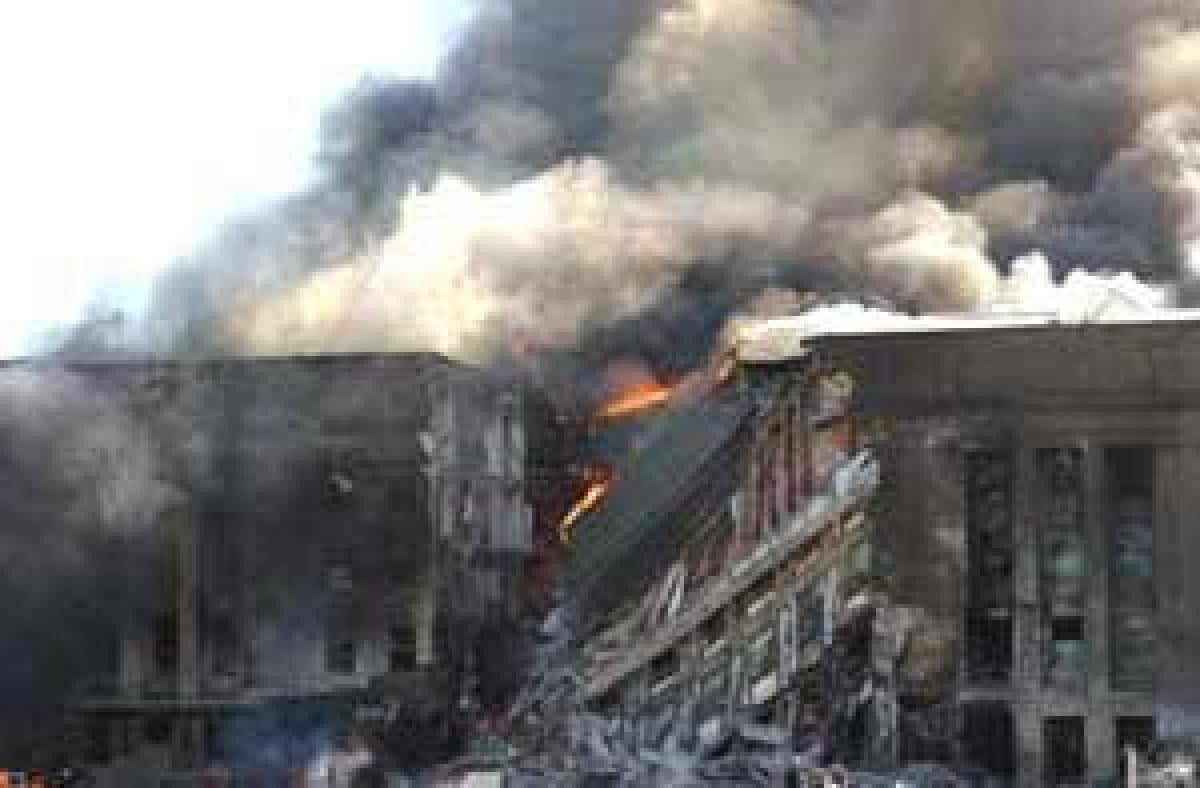Commander Craig Powell
From Vietnam to Iraq, stories of Navy SEAL heroism abound. But one such story did not take place on foreign shores. Commander Craig Powell had recently reported for what should have been contrasting shore duty at the heart of the Defense Department's bureaucracy, that five-sided building on the south shore of the Potomac known simply as "The Pentagon." He was facing challenges not usually associated with special warfare by taking a test for an acquisitions course on the fifth floor of the C-Ring, when a shockwave passed through the building.
It was 11 September 2001, and Powell had just missed becoming one of the newest casualties in a war that had been going on for a long time but was only this day to be fully acknowledged by the American people. A civilian airliner, serving as a guided missile for a ruthless enemy, had plowed into the Pentagon, striking the Navy Command Center and many other spaces in the great building.
In the harrowing hours that followed, Commander Powell carried on the SEAL tradition admirably as he worked alongside many other heroes to save those who might well have otherwise perished.
Right after the hit, Powell went outside and, with other bystanders, formed a human net to cushion the fall of people leaping from a window in a burning section of the building. Once a ladder arrived and people began using it instead of jumping, Powell, though injured while catching some of the jumpers, decided to go into the burning building through a small opening near the shattered Navy Command Center to search for "shipmates" who might be trapped inside. Wetting a handkerchief and placing it over his face to protect himself from the heat and smoke, Powell moved into the devastation and began searching for victims. With an Air Force lieutenant general and an emergency medical technician at his side, Powell helped remove some of the injured. Noting that the ceiling was sagging ominously, he then got under it and held it up while others escaped. Then he evacuated the space just before the entire area collapsed.
When later interviewed, Craig Powell said that what happened that day was "an all-service, all-hands effort that included leadership at all ranks: flag officers, petty officers and civilian personnel. Everyone did his or her part. . . . If I hadn't been there, someone else would have easily stepped in to do what I did."
Task Force 67
What should have been an easy victory for the U.S. Navy's Task Force 67 turned into a debacle at the Battle of Tassafaronga off the northeast coast of Guadalcanal late on 30 November 1942. The opposing 6-ship Japanese destroyer force under the command of Rear Admiral Raizo Tanaka lacked radar and four of his ships were encumbered with buoyant cargo drums.
Task Force 67, under Rear Admiral Carleton H. Wright, had been sent to intercept Tanaka's ships and was moving along a reciprocal course. Wright had taken command of TF 67 only two days earlier, and his force consisted of one light cruiser, four heavy cruisers, and six destroyers, two of which had been assigned to the force a few hours earlier. The original four destroyers, lined up about ten nautical miles ahead of the cruisers, detected the Japanese ships on radar, but a four-minute delay allowed the unalerted Japanese to pass. As the last of 20 torpedoes left his destroyers' tubes, Wright's cruisers opened radar-directed fire with their 6-inch and 8-inch guns, and the lead Japanese destroyer, the Takanami, received most of their attention, eventually sinking, but not from torpedo hits.
The Japanese, who had the advantage of flashless powder, destructive torpedoes, and more experience, responded with remarkable speed; having quickly jettisoned the cargo containers, they began launching 18 torpedoes at the U.S. cruisers. Two torpedoes hit Wright's flagship, the Minneapolis (CA-36), which, despite heavy damage to her bow and one boiler room, kept firing. The Minneapolis's sister ship, the New Orleans (CA-32), lost 80 feet of her bow to another torpedo. The older Pensacola (CA-24) was hit next and had to leave the fray with her after engine room and three of her four 8-inch turrets out of action. The light cruiser Honolulu (CL-48) escaped the torpedoes, but the final ship in the cruiser line, the Northampton (CA-26) was hit by two and came to a stop. The first three victims of Tanaka's destroyers were able to return to the U.S. West Coast for complete repairs but were out of service for a year. The Northampton was not so lucky and slid to the bottom of Ironbottom Sound at 0304 on 1 December. Two of Wright's destroyers rescued 773 of Northampton's 831-strong crew.
What was clearly a one-sided tactical defeat for the larger, alerted, and better equipped U.S. task force was nonetheless another step in the strategic defeat for the Japanese; Tanaka's five surviving destroyers escaped, but his resupply mission was a failure.
The 9,050-ton Northampton is seen here entering port at Brisbane, Australia, on 5 August 1941; note the high-speed bow wave painted on her hull.




